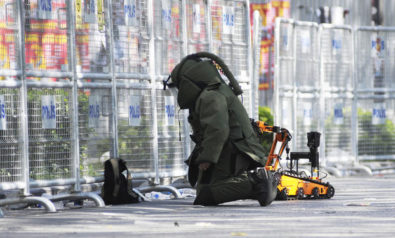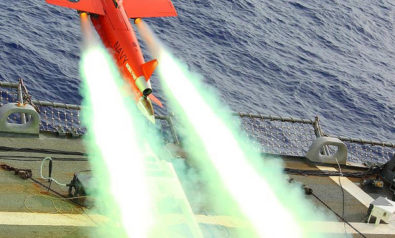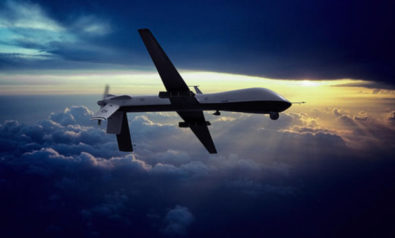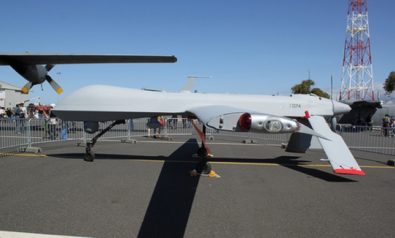Despite their rarity, the potential economic fallout of maritime incidents makes them severe threats.
Compared with land-based incidents, maritime terrorism represents a very small percentage of overall terrorist attacks. In 2003, the Aegis Research and Intelligence Database estimated between 1999 and 2003 that maritime targets represented less than one percent of all terrorist attacks. A similar analysis of the RAND terrorism database supports these figures; of the 40,126 terrorist incidents recorded between 1968 and 2007, only 136 (0.34%) were against the maritime domain. Not only are the maritime numbers very low, but maritime terrorist incidents of any significance have also not occurred for some years. The last major maritime attack was the bombing of the M/V Limburg while it was underway near Yemen in 2002.
Since then, maritime attacks have tended to be fairly small in nature, consisting largely of bombings near port facilities or suspicious activities involving barges. There has been only one attack against a ship since the Limburg; the attack on the M Star in the Strait of Hormuz in 2010. The low incidence of maritime terrorist attacks is despite the fact that a number of very active terrorist groups have known maritime capabilities. At the same time, nations spend billions of dollars annually, protecting their ships, port facilities, and related maritime infrastructure from attack. This raises the question of how real the threat of maritime terrorism really is. Would these funds be better spent elsewhere, or are they a vital protection against a potential period of greater maritime terrorism in the future?
A brief history
The current period of modern maritime terrorism can be dated from roughly the early 1960s when hijacking and hostage-taking for political ends dominated maritime incidents. The very well known hijacking of the Achille Lauro by the Popular Front for the Liberation of Palestine (PFLP) off the coast of Egypt in 1985, dates roughly from this period. The current period of maritime terrorism, concentrated in the early years of the 21st century, follows a pattern of suicide attacks on vessels. Maritime piracy for economic gain, rather than terrorism for political gain, now accounts for all maritime hijacking incidents.
Of the 44 terrorist groups described in the US Department of State’s Country Reports on Terrorism 2009, ten are identified as having maritime capabilities, or at least of having demonstrated maritime capabilities in the past:
-
al-Qaeda
-
Abu Nidal Organization
-
Abu Sayyaf Group
-
Basque Fatherland and Liberty
-
Hamas
-
Hizbollah
-
Jemaah Islamiya
-
Lashkar e-Tayyiba
-
Liberation Tigers of Tamil Eelam (currently defunct)
-
Palestine Liberation Front – Abu Abbas Faction
However, with the exception of al-Qaeda Jamaah Islamiyah in Indonesia, and the Abu Sayaaf Group (ASG) in the Philippines, many terrorist and/or insurgency groups of most concern to maritime security trade do not appear on this list — either because they had not been designated as Foreign Terrorist Organizations by the United States, or because they had not yet demonstrated maritime capabilities. Since 2009, groups known to be acquiring maritime capabilities have been added. These include: al-Shabaab, al-Qaeda in the Arabian Peninsula (AQAP), and the Abdallah Azzam Brigades, an affiliate of al-Qaeda responsible for the 2010 attack on the M Star.
To date, the Abu Sayaaf Group is responsible for the most destructive maritime terrorist act in modern history; the bombing attack on SuperFerry 14 in Manila Bay in February 2004, which killed 116 people. This said, of all the groups with known maritime capabilities, al-Qaeda has had the most far-reaching and developed maritime strategy. Initially developed by Abd al Rahman al-Nashiri, this four-part strategy consisted of: 1) suicide attacks on vessels, 2) hijacking ships and using them as “weapons” against port or transportation infrastructure, 3) attacking large vessels such as supertankers from the air by using explosive-laden small aircraft, and 4) attacking vessels with underwater demolition teams or with suicide bombers. Al-Qaeda has demonstrated its maritime terrorist capabilities, particularly also in a 2004 attack on a smaller boat launched from the USS Firebolt in the Persian Gulf. These attacks were consistent with a documented al-Qaeda strategy to attack Western maritime targets, particularly those with economic importance such as the M/V Limburg.
Since the capture of al-Nashiri in 2002, there has been little maritime threat directly from al-Qaeda. Rather, maritime terrorist concerns seem to have now shifted to al-Qaeda-related affiliates, many of which operate in Africa. In February 2010, Yemen-based al Qaeda in the Arabian Peninsula (AQAP) stated it would coordinate with “Islamic fighters” from Somalia to secure both sides of the Bab al-Mandab strait, through which 30% of the world’s trade passes annually. While there are doubts about AQAP’s current ability to close the strait, both the Yemeni and Somali governments have urged the international community to take steps to eliminate AQAP and al-Shabaab “to avert the risk to the global economy posed by a seizure of Bab al-Mandab.”
The real threat
Despite these threats, given the relative recent quiet on the maritime front, how concerned should we be about maritime terrorism? The answer, unfortunately, is that we should continue to be very concerned. A former UK First Sea Lord and Chief of Naval Staff deemed maritime terrorism “a clear and present danger” that may “potentially cripple global trade and have grave knock-on effects on developed economies.” USN Captain Jim Pelkofski (Ret.) has noted that “indications point to an acceleration of the pace of maritime terrorism, heralding a coming campaign.”
The real concern however is not so much that a maritime terrorist attack might or might not be imminent; rather the threat is the potential for harm were even one minor maritime terrorist event to occur in a major port or maritime facility. Hijacking and using a ship as a weapon or to sink and close a major shallow chokepoint such as the Strait of Malacca or the Suez Canal could have significant economic implications for the global economy. Similarly, an improvised explosive device (IED), chemical or biological weapon, or other weapon of mass destruction discovered in a container could have dramatic economic repercussions. A 2003 OECD report described a port security war game simulating the discovery of several radiological devices in shipping containers throughout ports in the United States. Despite the fact that these devices were not detonated in the scenario, the estimated economic costs totaled $58bn for the United States alone, with US ports affected for over three months.
Depending on the measure, between 80% and 90% of global trade moves by sea, with the majority of non-bulk cargo carried in shipping containers. Over 15,000,000 containers are currently in circulation, making over 200,000,000 port visits annually. The world’s top ten container ports handled 178,000 thousand TEU (twenty foot equivalents) in 2010, nearly as much as the next 40 ports together (179,070 thousand TEU). With trade concentrated in so few ports in today’s global economy, even a single maritime terrorist incident has the potential for significant economic disruptions with considerable financial and human implications. Given these potential impacts, the threat of maritime terrorism must continue to be taken very seriously.
The views expressed in this article are the author's own and do not necessarily reflect Fair Observer’s editorial policy.
















Comment